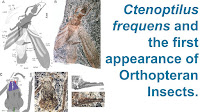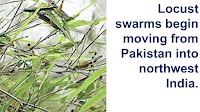Bush Crickets of the genus Eupholidoptera are found around the Mediterranean Basin from southern France to Turkey and the Levant. There are currently 55 known species, mostly with very limited distributions. The maximum diversity in the genus has been recorded from Greece (26 species) and Turkey (21 species). The cryptic habits of these Crickets, which are almost entirely nocturnal and mostly live in dense thorn-scrub, means that new species are still being discovered fairly regularly. The standard method of sampling Orthopterans, capture by hand, is difficult with cryptic groups such as Eupholidoptera, but members of the genus have been captured in baited pit traps set for Spiders and Beetles, which offers an alternative way to study the group.
In a paper published in the journal Zootaxa on 26 June 2025, Luc Willemse of the Naturalis Biodiversity Center, Christodoulos Makris of Lemesós on Cyprus, and Baudewijn Odé of Plasmolen in the Netherlands, describe a new species of Eupholidoptera from the Troodos Massif.of Cyprus.
The new species is named Eupholidoptera stelae in honour of Stela Makris, the daughter of Christodoulos Makris. It is described from a series of specimens obtained from baited traps and 'wine ropes' (ropes made from absorbent material which has been soaked in a mixture of vinagar and sugar and draped over shrubs and bushes - a method used primarily to capture Moths) in the Cedar and maquis forests of the Troodos Massif of Cyprus.
Eupholidoptera stelae field images. (1) Female Cedar Valley 07/09/2021 on a ‘wine rope’; (2) female Kannoures 23/08/2019; (3) male Kannoures 21/09/2019; (4) male Kannoures 21/09/2019. Christodoulos Makris in Willemse et al. (2025).
Female specimens are, on average, slightly larger than males, measuring between 17.4 and 21.4 mm, compared to between 16.2 and 19.5 mm in males. They are maroon in colour, alternated with some yellowish and blackish parts, a shade of green is visible on the legs. In females the proximal edge of the last abdominal tergite is black.
Eupholidoptera stelae is found at altitudes of 525 m–1515 m in the central and south-western part of the Troodos Massif of Cyprus, a landscape dominated by open Pine and Oak forests. The area of available habitat appears to be over 1000 km², and while it has only been detected in an area of about 24 km², it is difficult to detect and could be more widespread. This area receives a high number of tourist visits, but falls mostly within a series of national reserves, and is largely protected from development. For this reason, Willemse et al. do not believe that Eupholidoptera stelae needs to be included on the International Union for the Conservation of Nature's Red List of Threatened Species.
Habitats of Eupholidoptera stelae. (250 The central and south-western part of Troodos Massif. (26) Open Black Pine, Pinus nigra, forest with an undergrowth of Golden Oak, Quercus alnifolia, Grecian Whitebeam, Sorbus graeca and Holy Bramble, Rubus sanctus, in the Kannoures area of the Troodos Mountains, (27) Cedar forest with the endemics Cyprus Cedar, Cedrus brevifolia, and Golden Oak, Quercus alnifolia, in the Tripilos area of Pafos Forest, (28) Shrubs including the endemic Golden Oak, Quercus alnifolia, in Turkish Pine, Pinus brutia, forest. Christodoulos Makris in Willemse et al. (2025).
See also...




.jpg)





